Search this site ...
African Clothing
African clothing commonly refers to the traditional clothing worn by the people of Africa.
Different tribes throughout the continent pride themselves on their national dress which they use for ceremonies and special occasions. There are many varied styles of dress and the type of cloth plays an integral role in fashioning the garment. The fabric often reflects the society in general as well as the status of individuals or groups within that community.
In some instances traditional robes have been replaced or influenced by foreign cultures, like colonial impact or western popular dress code.
HISTORY OF CLOTHING IN AFRICA
The
evolution of dress in Africa is very difficult to trace due to the lack of written word
and actual historical evidence. Much is pieced together from various sources
like traditional robes being handed down to present day tribal members, word of
mouth (oral history), theater (masquerades) and from art and artifacts which
show sculptural representations of dress.
Clothing was not generally needed for warmth or protection in most areas of the African continent due to the warm and hospitable climate and many tribes did not wear much at all. The men wore just a loin cloth or apron and the women wore wraps around their waist or breasts, often adorning the rest of their bodies with scarification and paint ochres.
Bark cloth, furs, skins and hides were mainly
used for these first forms of clothing.
Males simply wrapped the bark cloth over a belt and passed between the legs while women draped the cloth over the belt to hide the front of their bodies.
Raffia was used to sew together
separate pieces of bark cloth as well as being used for grass skirts.
 Barkcloth
BarkclothStone age man onward made bark cloth by peeling bark from trees and then pounding it with a rock until thin and malleable. Small pieces would be sewn together with hide or raffia to make larger pieces to cover the body.
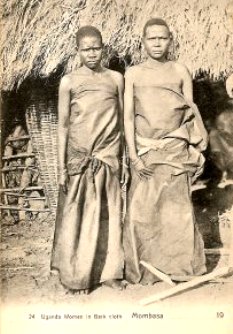 Ugandan women, barkcloth wrappers, early 20thC
Ugandan women, barkcloth wrappers, early 20thCSometimes it was decorated with patterns giving rise to the tradition of decoration that exists in almost every African country.
Adornment of clothing came by way of fashioning jewelry and head gear from seashells, bones, ostrich
egg shell pieces and feathers.
The earliest evidence of textile manufacture appeared at Igbo-Ukwu and consisted of excavated fragments of unpatterned, bast-fibre cloth dating from the 9th Century. (Bast is the plant fibre made from the phloem, the inner bark). Discovery of the Tellem caves in Mali exposed 11th and 12th Century funerary sites which revealed fragments of cotton and wool fabric dyed with indigo.
And then
around the 15th Century, trade occurred in Africa with shipping
routes being opened up between Europe, Africa and the East. Exotic items
arrived on the continent and began to be coveted by the local inhabitants for
decoration of their local cloth. Beads, shells and buttons began to appear on
garments, either as embellishment or making up the entire garment like beaded aprons,
capes, headbands and shoes.
Various weaving techniques were developed in different areas, some more progressive than others. Fibres used were cotton, raffia, silk and wool. Woven and decorated textiles used for African clothing became a reflection of the tribe’s status, its socioeconomic standing, its culture, its environment and its climate.
TRIBAL CLOTHING
Traditional and contemporary woven and/or printed fabric, wrapped or draped around the body forms the nucleus of tribal clothing. Adornment of the body with headdresses, bags, belts, collars, girdles and capes made from beads, feathers, leather, gold and silver, sea shells, ostrich egg shell, ivory, buttons, fur, skins, bone, animal tails and hair, raffia, wood, grass, bells and pressed metal all contribute to a rich and embellished costume used for tribal purposes.
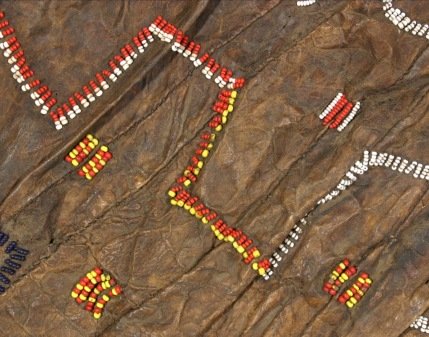
Combined
with the wearing of headbands, necklaces, bracelets, wristlets, armbands and
anklets and oiled, perfumed skin and dressed hair, adult women and men could be
splendidly worn down with the weight and volume of their dress.
The skin of an animal was often chosen for
symbolic significance and showed tribal allegiance or personal totems.
Sometimes it needed to be kept intact to bring good health and good luck to the wearer.
Garments
were worn to mark the status of an individual or to mark a special ritual or
passage of time as people moved from one state to another.
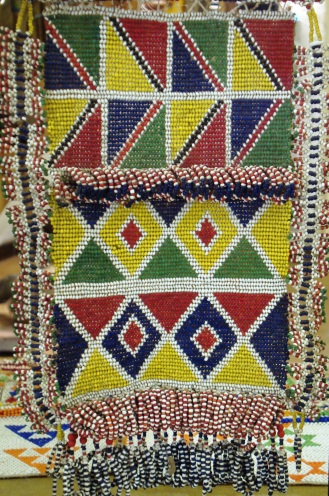 'Sokobushu', antique beaded apron, S Sotho
'Sokobushu', antique beaded apron, S Sotho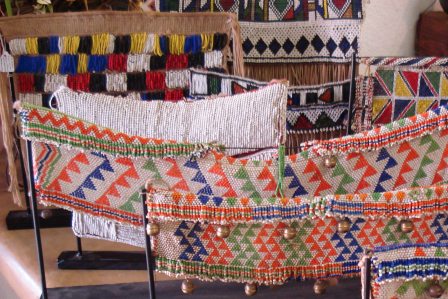 Zulu beaded skirts and aprons, with bells, antique
Zulu beaded skirts and aprons, with bells, antiqueYoung
girls or maidens started with just a skirt or apron while married women
wore full body wraps and cloaks that were highly valued by the owner.
Colours and patterns, created in printed and dyed cloth, woven fabric strips or beaded attire distinguish one ethnic group from another. Tribes pride themselves on the quality of their hand-made cloth using techniques that have been handed down, generation by generation, for centuries.
These clothes can be used as wraps and capes or sewn into garments for both males and females.
Batiks are cotton fabrics with designs painted
on them using wax-resistant dying. In Africa, the Yoruba make Adire cloths this
way using cassava paste instead of wax.
Some examples of woven and printed cloth are noted below:
Yoruba, Nigeria
Aso Oke (narrow strip weave cloth sewn together Adire Eleso (indigo resist-dyed cloth)
Buganda, Uganda
Bark cloth
Asante, Ewe, Ghana
Kente cloth (woven strip cloth) Adinkra cloth (printed with stencils or stamps) Gonja or Batakari ‘fugu’ (woven strip, cotton cloth)
Bambara, Mali
Mudcloth or Bogolanfini (mud resist-dyed cloth)
Maasai, Swahili, E Africa
Kitenge, Kanga (printed cloth) Kikoi, (woven cloth)
Kuba, Nigeria
Kuba or Shoowa cloth (woven raffia cloth)
Kitenge cloth has a long history in East and Western Africa but nowadays has expanded to many other countries on the continent. It is an informal and inexpensive printed fabric that features a distinctive border design and sometimes has political slogans printed on it.
Here, Liberian women wear kitenge dresses depicting the Liberian flag and political leaders for National Commemoration Day.
Ashanti weaving has two levels, cotton cloth for general use and cloths partly or wholly made of silk for courtly application as seen opposite.
This is widely known as ‘Kente’ cloth. Sadly, Ashanti weaving is falling past its prime as the demand for high standards and complicated pattern designs has declined.
In some areas of Africa, local people have taken on the dress of their colonial settlers and created something quite unique.
The Herero women of Namibia have adapted the Victorian dress of their German settlers and adapted it into their own full and magnificent style complete with cowhorn-shaped hat.
MODERN AFRICAN CLOTHING
Today, African garments take their roots in traditional dress and are worn by millions of people for both ceremonial occasions and for everyday wear. This makes for a vibrant and colourful scene wherever you go in Africa.
African dress may consist of a single item or a fully composed outfit and range from simple to complex.
Kaftans
Kaftans worn by women today in Africa were originally men’s attire. In modern times both men and women wear kaftans that can either be just a simple one garment robe plus hat or a 3 piece ensemble completed with a hat and a scarf to make a very impressive outfit.
A Kanzu
is a long (usually white) kaftan with long sleeves worn by Swahili men.
Kaftans are popular with both sexes in Central and Western Africa where they are called boubou’s for men and m’boubous for women. A woman’s m’boubou consists of a large gown overflowing on top of a wrapper and adorned with an elaborate headscarf.
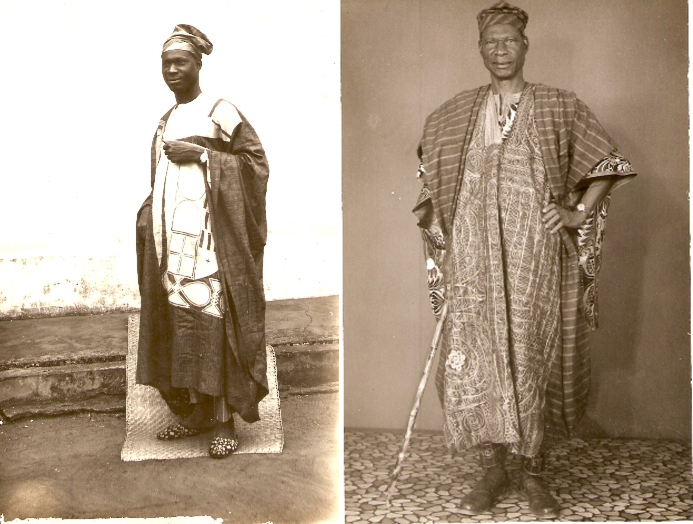 Traditional Agbada, Yoruba, Nigeria
Traditional Agbada, Yoruba, NigeriaAn Agbada is the Nigerian Yoruban version of a boubou. This is a long, loose-fitting, often embroidered gown having wide sleeves and a hole in the centre for the head to slide through and is worn especially by Yoruba males. It was worn over a long sleeved tunic (buba) and long tie-up trousers (sokoto) and accompanied by a hat (chechia) that matches the attire.
All 3 items of clothing are usually the same colour.
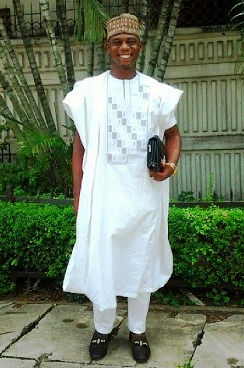 Agbada Moderne, Nigeria
Agbada Moderne, NigeriaThese days, modern African men have embraced the look but swopped the fabric for something lighter and it is worn over a short sleeved buba. The actual agbada comes in shorter lengths and widths, and the pants are tighter fitting, producing a very neat and stylish effect.
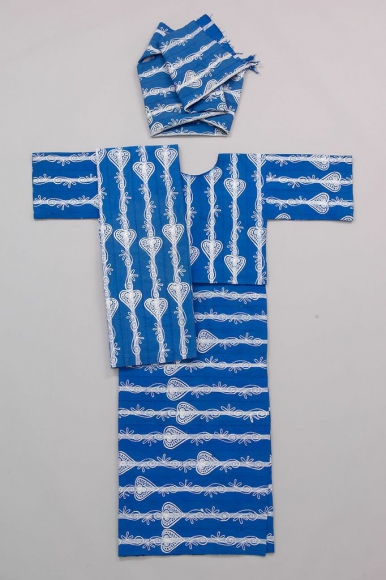 4 piece lady’s suit, 'aso oke', embroidered, SW Nigeria, late 1970s.
4 piece lady’s suit, 'aso oke', embroidered, SW Nigeria, late 1970s.Aso Oke means top or ‘prestige’ cloth and there are three main types:
Alaari, Sanyan and Etu.
Alaari are the red ones; Sanyan are usually brown or light brown and Etu is the dark blue aso oke dress.
Originally, the pieces were either deep indigo, natural beige silk or an imported magenta silk weave.
Today,
the threads of cotton, polyester, rayon, silk, lurex, and acrylic are all
merged on narrow strip looms into long, thin shimmering pieces of fabric.
They are sewn together to create the full cloth and even more artistic expression can take place in the sewing and the embellishment, mainly embroidery on the bodice and sleeve ends.
Ankara (Dutch wax)
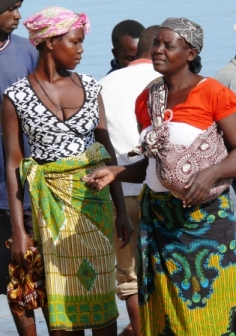 ladies wearing capalana wraps, Mozambique
ladies wearing capalana wraps, MozambiqueEnsembles are very often made from Ankara or Dutch Wax fabric.
They can be elaborate outfits with hats and scarves or they can be simple wrappers which are worn around the waist with a Westernised shirt, frequently acquired from the secondhand clothes business that has swamped the continent in recent years.
Throughout Africa, both men and women wear variations of the wrapper (also called kanga, futa, lappa, capalana or pagne).
Ankara is a vibrant material with rich, colorful patterns.
These designs are a form of expression pronouncing everything from marital status to popular culture, political and religious beliefs. In recent years this hardy, lightweight fabric has become very trendy and even made its way to luxury designer brands. Its application has gone beyond being just a wrap to being used as a base for hats, handbags, shoes and all manners of clothing, as well as décor items for the home.
However, despite being known as the quintessential ‘African fabric’ ankara was originally manufactured by the Dutch for the Indonesian textile market and then later diverted to West Africa.
Today, Ghana and Tanzania produce locally made Dutch Wax fabric but at the top of the pile is Vlisco who manufacture this product in Holland. China is also a current producer.
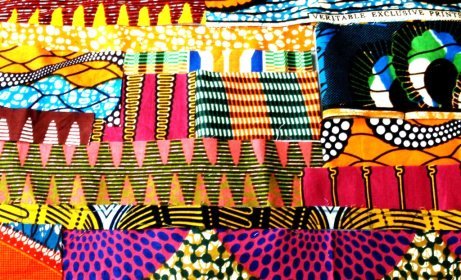 Colourful Dutch Wax (Ankara) fabrics
Colourful Dutch Wax (Ankara) fabricsFor a very interesting read on the history of Ankara wax prints, click here
Dashiki and Madiba shirts
A Dashiki is a loose fitting pull-over shirt, long or short sleeved with an ornate embroidered V-shaped collar that is uni-sex and comes in many lengths, colours and forms.
Both of these shirts can be both formal or informal depending upon the application of cloth, the style of the garment and the embellishment of it.
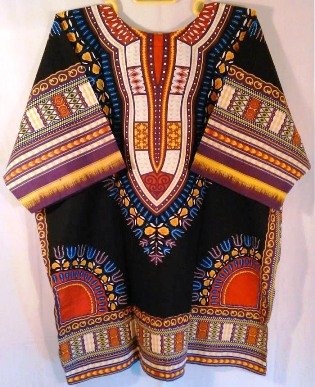 men's dashiki shirt
men's dashiki shirtA very modern take on a sixties fashion statement and embracing African heritage in an elegant and distinguished way.
Nelson Mandela made the Madiba shirt his signature dress and whilst this shirt also has its roots in Indonesian wax resist fabric, it has since been adopted as an African garment, celebrating the style and elegance of the ex-South African president.
* Contemporary African clothing and designers can be viewed on this page
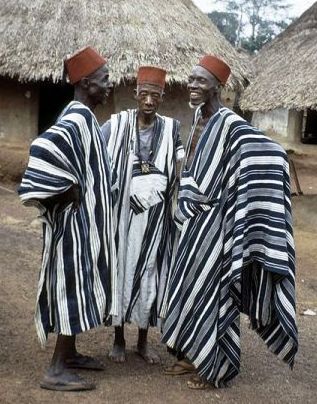
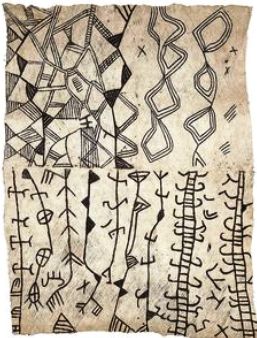
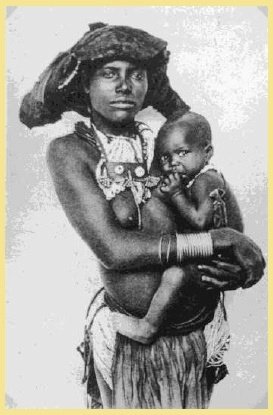
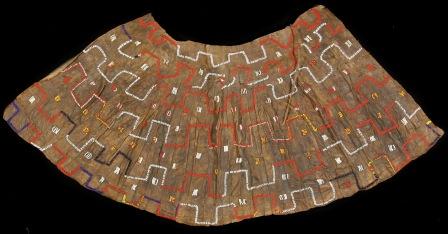
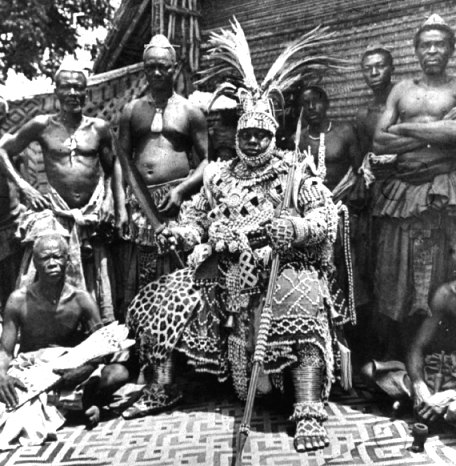
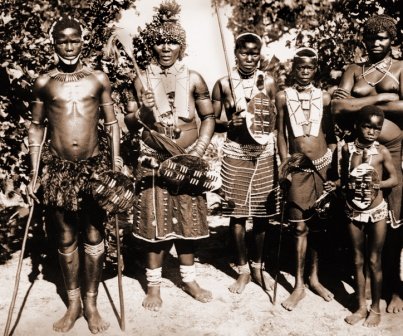
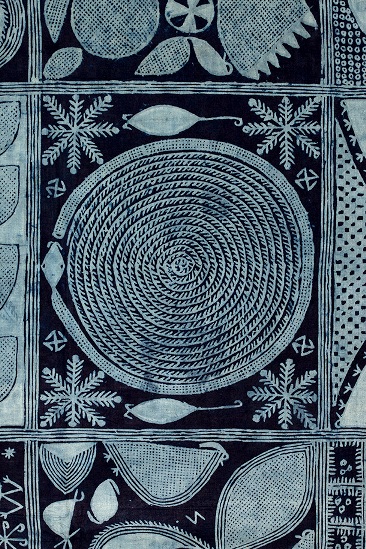
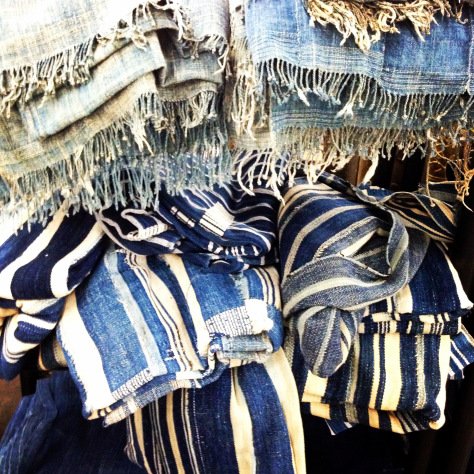
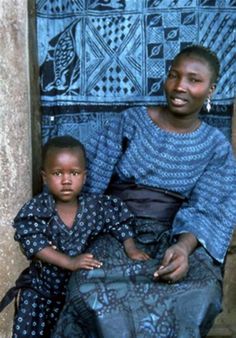
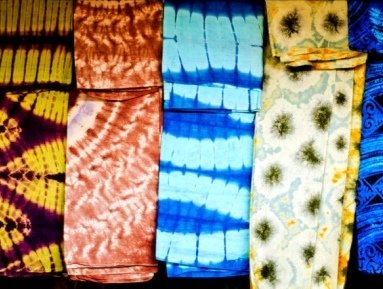
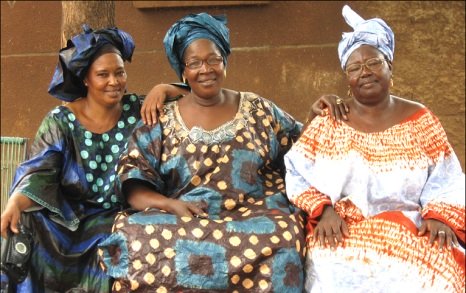
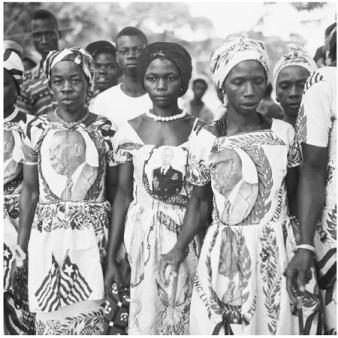
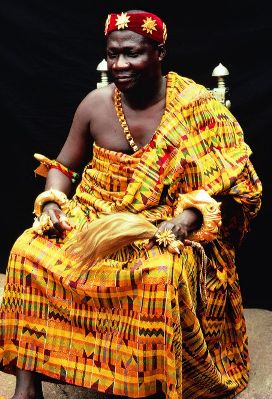
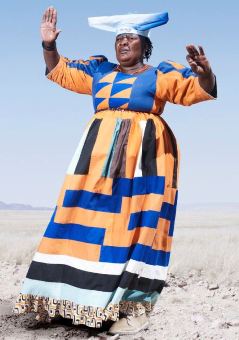
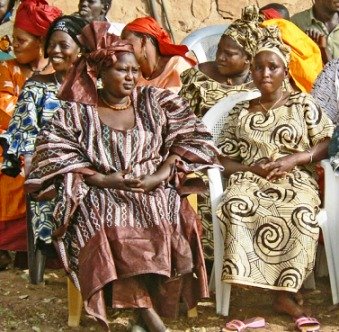
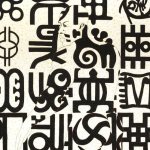
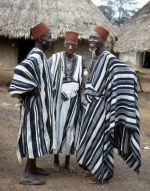

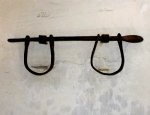
New! Comments
Have your say about what you just read! Leave me a comment in the box below.